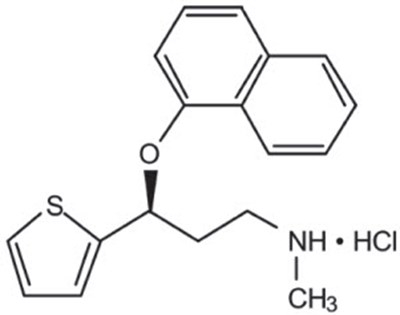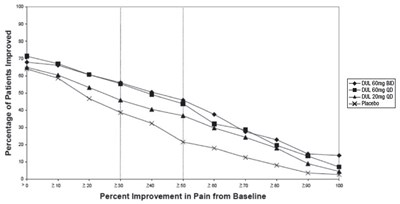Product Images Duloxetine Delayed-release
View Photos of Packaging, Labels & Appearance
Product Label Images
The following 11 images provide visual information about the product associated with Duloxetine Delayed-release NDC 68071-2711 by Nucare Pharmaceuticals,inc., such as packaging, labeling, and the appearance of the drug itself. This resource could be helpful for medical professionals, pharmacists, and patients seeking to verify medication information and ensure they have the correct product.
pdp - 68071 2711 9
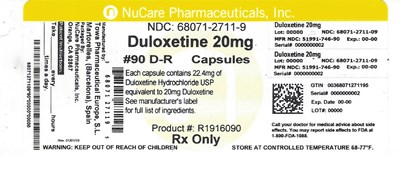
This is a description of a medication called Duloxetine 20mg, specifically lot number 00000. It comes in a bottle of 90 capsules and the National Drug Code (NDC) is 68071-2711-09. Each capsule contains 22.4mg of Duloxetine Hydrochloride USP, equivalent to 20mg of Duloxetine. It is manufactured by unknown companies with NDC numbers 51991-746-90 and 68071-2711-9. The expiration date is 00-00 and the medication should be stored at a controlled temperature of 68-77°F. It also contains a warning to keep it out of reach of children.*
Figure 1 - duloxetine 02
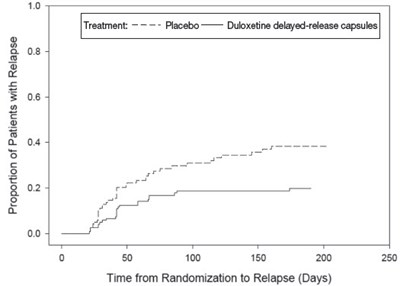
The graph shows the proportion of patients with relapse over time from randomization to relapse (in days) for two different treatments: placebo and duloxetine delayed-release. The y-axis indicates the percentage of patients with relapse, while the x-axis indicates the time from randomization to relapse. The graph suggests that patients treated with duloxetine delayed-release tend to have a lower risk of relapse compared to those treated with placebo.*
Figure 2 - duloxetine 03
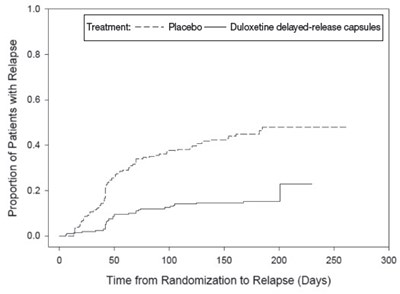
The graph shows the proportion of patients who experienced a relapse while taking either duloxetine delayed-release capsules or a placebo. The vertical axis represents the percentage of patients while the horizontal axis shows the time elapsed in days from randomization to relapse. The proportion of patients who experienced a relapse was lower in the duloxetine group compared to the placebo group.*
Figure 5 - duloxetine 06
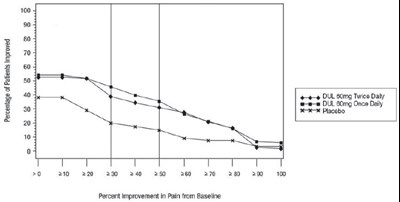
The text describes a chart or table showing the percentage of improvement in pain experienced by patients. The chart likely includes three columns: "DUL 50 Twice Daily," "DUL 50mg Once Daily," and "Placebo," and each row of the chart shows the percentage of improvement for each medication.*
Figure 8 - duloxetine 08
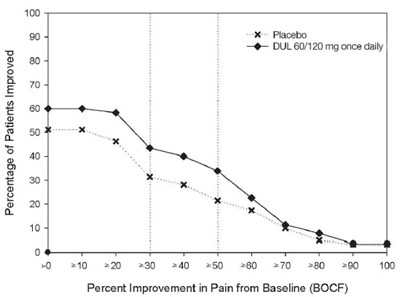
The text shows a chart displaying the percentage of patients improved in pain from a baseline, with a comparison between a placebo group and a group taking DUL 60/120 mg once daily. The chart measures improvement in increments of 10 from 0 to 100 on the x-axis.*
Figure 9 - duloxetine 09
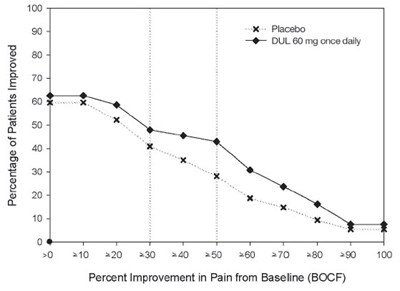
This appears to be a graph showing the percentage of patients who saw improvement in pain from baseline, with the x-axis indicating different percentages and the y-axis indicating the dosage of a medication (placebo or DUL 60mg once daily). The graph also includes specific data points for each dosage.*
Figure 10 - duloxetine 10
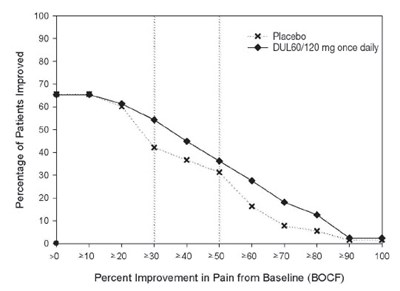
This is a graph showing the percentage of patients improved with either a placebo or DULBO/120mg once daily, based on the percent improvement in pain from baseline. The graph also displays a percentage scale ranging from 0% to 100% and a horizontal axis featuring values ranging from 220 to 290.*
* The product label images have been analyzed using a combination of traditional computing and machine learning techniques. It should be noted that the descriptions provided may not be entirely accurate as they are experimental in nature. Use the information in this page at your own discretion and risk.
